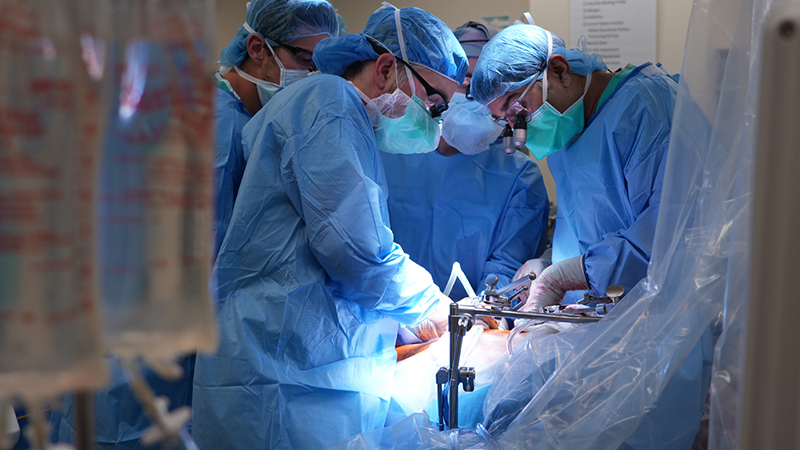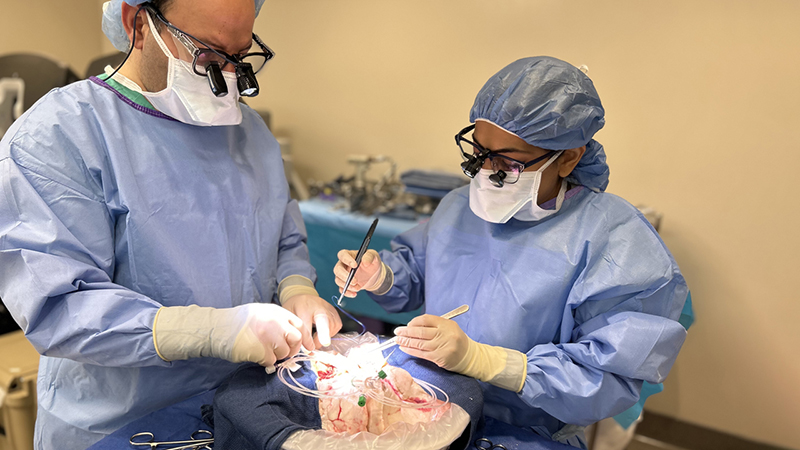How Does Deep Brain Stimulation Work?
Surgical Relief From the Symptoms of Neurological Disorders
Updated March 2025
When medication isn’t enough to manage the symptoms of certain neurological disorders, deep brain stimulation (DBS) may help. This treatment can reduce some of the symptoms, such as tremors and stiffness, that make tasks difficult or frustrating for those living with a neurological disorder.
This is a safe therapy that can help so many people.— Jason K. Hsieh, MD
While DBS doesn't cure the underlying neurological condition, it can manage symptoms for many years and allow people to decrease the number of medications they need. For example, implanting a DBS device is the most commonly performed surgical treatment for Parkinson’s disease and can help reduce symptoms such as tremors, stiffness and slow movement. DBS can also cut down the number of medications needed to manage the disease, and the side effects from those medications.
“This is a safe therapy that can help so many people living with Parkinson’s disease, tremor or other neurological disorders, and it’s underutilized,” says Jason K. Hsieh, MD, a neurosurgeon at Northwestern Medicine. He attributes the underutilization to people perhaps not learning about the procedure from their physician, having limited access to specialized care or having a fear of surgery.
Conditions Treated With DBS
DBS is approved by the U.S. Food and Drug Administration for the treatment of:
- Parkinson’s disease
- Dystonia (involuntary muscle contractions)
- Essential tremor
- Medication-resistant epilepsy
Dr. Hsieh says evidence is also building for DBS to be used for depression, obsessive-compulsive disorder, Tourette syndrome and refractory pain.
How DBS Works
DBS requires a surgical procedure to implant a device that delivers high-frequency electrical stimulation to precise areas within the brain. A neurosurgeon implants a thin wire, also called a lead, that can deliver electricity through small metal contacts (electrodes) at the tip. The tip of the leads are placed in the area of the brain that carries the abnormal signals producing symptoms. Electrical stimulation alters these abnormal signals, which leads to symptom improvement.
The placement of electrodes varies based on the illness being treated. Dr. Hsieh says that depending on the disease, the patient may be awake briefly during the procedure so that the care team can immediately test for side effects in the operating room.
Prior to the procedure, a pre-operative evaluation is performed to maximize the success of DBS surgery. The evaluation may include a brain MRI scan, CT scan, neuropsychological testing, videotaped evaluation of movement both on and off medication, and other tests if needed.
The precise placement of the electrodes is done with the help of advanced imaging and surgical techniques as well as brain mapping to make sure that each electrode is placed in the correct area of the brain, avoiding healthy tissue and vital functions. Once the electrodes are placed, the wire is connected to a neurostimulator power supply (a battery-operated generator), which is placed under the skin near the collarbone. The system, often called a brain pacemaker, regulates the abnormal signals.
Once the electrodes and generator device are securely in place, the electrodes send electrical impulses that help normalize abnormal impulses. In other words, it helps block faulty signals within the brain that cause tremors or other movement symptoms to occur. No healthy brain tissue is destroyed with this procedure.
Surgical Risks
Implantation of DBS is considered a safe procedure, but like all surgeries, it’s not without potential risks.
- Infection: Any surgical procedure carries a risk of infection at the incision site or around the implanted hardware. However, infection risk has been reduced with rechargeable battery-operated generators, eliminating the need to reopen the skin to change a battery.
- Bleeding: Bleeding in the brain during or after surgery is rare but can be a serious complication.
- Allergic reaction: An adverse reaction to anesthesia used during surgery is possible.
Who Should Consider DBS
DBS is an option to consider if your symptoms can’t be adequately managed by medication, are progressing, are becoming more difficult to manage and are impacting quality of life. You may also want to consult your physician to see if DBS is the right treatment for you if:
- Medications no longer work as quickly or effectively as they used to, or their benefit is inconsistent.
- You have to take medications multiple times per day, or the medications wear off between doses.
- You are taking progressively higher doses of medication for the same effect.
- Medications required to control symptoms result in unacceptable side effects such as hallucinations or dyskinesias (involuntary movements that can happen in one or several parts of your body).
- The side effects of medication have become unbearable.
Life After DBS
Everyone responds to DBS differently. Most people notice results shortly after the initial programming of the DBS system. However, it can take several visits with your care team to adjust the settings to improve symptoms. The settings can also be updated if your symptoms change over time.
Consult a neurologist to find the treatment right for you.







